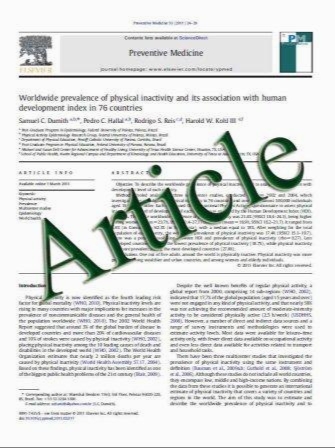Validation of the Psychometric Hepatic Encephalopathy Score (PHES) for Identifying Patients with Minimal Hepatic Encephalopathy
- نوع فایل : کتاب
- زبان : انگلیسی
- مؤلف : Andre´s Duarte-Rojo Jose´ Estradas Roberto Herna´ndez-Ramos Sergio Ponce-de-Leo´n Juan Co´rdoba Aldo Torre
- چاپ و سال / کشور: 2011
Description
Background The psychometric hepatic encephalopathy score (PHES) is a battery of neuropsychological tests used in the diagnosis of minimal hepatic encephalopathy (MHE). Aim The aim of this study was to construct and validate a dataset of normal values for the PHES. Methods Volunteers and patients with cirrhosis with and without low-grade overt hepatic encephalopathy (OHE) were enrolled. All subjects completed the PHES battery, and possible modifying factors were assessed. Formulas to predict expected scores in cirrhotics were constructed, and MHE was diagnosed whenever a deviation of \-4 SDs occurred across the five tests. Results Among the 743 volunteers, age and years of education influenced the scores of all tests. Eighty-four patients with cirrhosis lacked evidence of OHE, whereas 20 had OHE: median PHES were -1 [0 to -3] and -9 [-6.5 to -11.8] (P\0.001), respectively. Thirteen of the 84 patients (15%) with cirrhosis but without OHE had MHE. Patients with MHE were older and less educated than those without MHE (61 ± 8 and 52 ± 10 years old, P = 0.003; 7 ± 4 and 12 ± 5 years education, P = 0.002), whereas liver function was not different (MELD, 8 ± 5 and 8 ± 5). A very strong correlation between these norms and those derived from Spain was observed (r = 0.964, P\0.001). Conclusions PHES performance was mostly influenced by age and education, and expected results in cirrhotics need to be adjusted for these factors. Our validation of Mexican norms for PHES (PHES-Mex) establishes a practical method for assessing MHE and contributes to international attempts to standardize diagnostic protocols for MHE.
Dig Dis Sci DOI 10.1007/s10620-011-1684-0 Received: 23 January 2011 / Accepted: 14 March 2011


